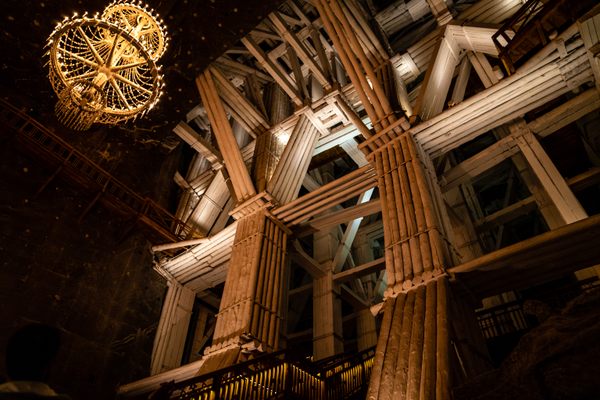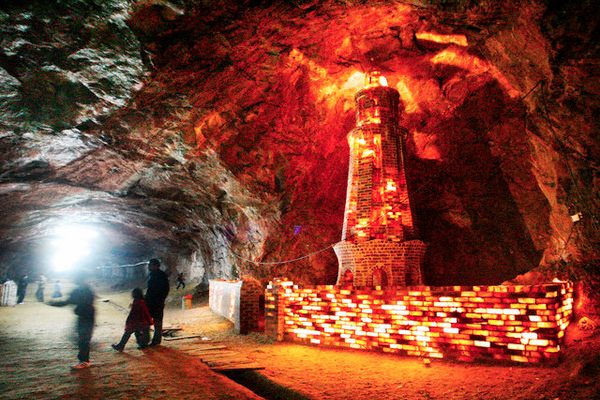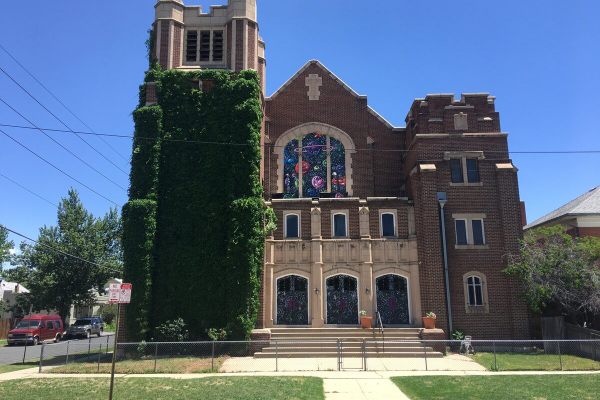New Uses for Old Mines
Underground in the Virginia-Pocahontas Coal Company Mine (1974) (photograph by Jack Corn, via US National Archives)
You may recognize the name Iron Mountain — it’s a major records management and data storage company, and their shredder trucks can be seen collecting documents at offices in many big American cities. These days, much of their business takes place in “the cloud,” but Iron Mountain got its start in 1951 by storing bank records inside the “Iron Mountain mine” in Livingston, New York.
There, the cavities and tunnels left behind by an old limestone mine were turned into an ultra-secure storage facility 220 feet underground. The company originally did business under the name “Iron Mountain Atomic Storage,” highlighting their ability to keep your valuables safe in the event of nuclear attack. Today in Pennsylvania, the company is using part of another limestone mine to test the potential of geothermal cooling systems for computer server farms.
The original vault at Iron Mountain Atomic Storage (via Iron Mountain)
Around the world, people have taken over abandoned or disused mines and given them new life. Sometimes mines are used for practical purposes, as with the Iron Mountain facilities, but others are more whimsical. In Colombia there is an entire underground cathedral crafted from salt, while Romania has an amusement park and art gallery underground. Others have been turned into medical clinics, shopping malls, government offices, and even a massive mushroom farm outside of Pittsburgh.
The Salt Cathedral of Zipaquirá is an elaborate religious venue and tourist attraction, built 200 meters (656 feet) underground in Cundinamarca, Colombia. Although not officially a Catholic church, up to 3,000 visitors attend services in the Cathedral each week. It is not just a sanctuary; there are several chambers open to visitors depicting religious statuary carved from salt, as well as educational displays on the history of the mine and the salt mining process.
Pews in Zipaquira Cathedral (photograph by McKay Savage)
Cross-shaped entryway in Zipaquira Cathedral (photograph by Remi Jouan)
The Khewra Salt Mines in Pakistan are said to be the second-largest in the world. Mining was first recorded here in the 1200s. Today, the mines still produce 325,000 tons of salt every year, and they don’t expect to run out any time soon.
The empty space left behind by all this mining has been transformed into a popular tourist attraction. There is a mosque, as well as a post office, constructed entirely from salt. Among the more unique uses of the space is a 12-bed clinic for asthma patients to take in the salt mine air. Although it sounds downright Victorian, they are not the only place offering such therapy in the belief that the salt mine environment is beneficial for respiratory diseases.
Visitor praying in the Salt Mosque at Khewra Mines (photograph by Smsarmad)
Inside the Khewra Mines (photograph by Manal Khan)
Outside of Boyers, Pennsylvania, an old limestone mine has been put to more prosaic use as the U.S. Office of Personnel Management Retirement Operations Center. The center employs 600 people working underground to process millions of paper documents by hand. Some of those documents end up in one of the 28,000 file cabinets lining the mine’s tunnels.
The office is not located underground for security purposes or anything like that. The government just needed a lot of space to store files, and this turned out to be a very economical option.
The Salina Turda Salt Mine in Romania went in a different direction, becoming an otherworldly underground amusement park. After mining stopped in the 1930s, the space was briefly used as an air-raid shelter and then as a cheese warehouse. In 1992, it was opened to the public as a park. In addition to a Ferris wheel and lake for boating, the mine contains a spa, museum and art gallery.
Turda Salt Mine, Romania (photograph by Codrin Bucur)
Boating in the mine (photograph by Cristian Bortes)
A retired limestone mine in Worthington, Pennsylvania, is an important part of the world’s largest mushroom farm. In addition to a 2,000 acre aboveground property, Creekside Mushrooms Ltd. grows mushrooms underground in a 150-mile network of limestone tunnels. The facility can produce 60 million pound of mushrooms every year, and is listed in the Guinness Book of World Records.
An example of mushrooms growing in a limestone mine in France (photograph by Édouard Bergé)
Poland’s Wieliczka Mine produced salt from the 13th Century through 2007, leaving behind a thousand-foot deep, 178-mile long hole in the ground. Today mining has stopped, but millions of visitors still come to see the statuary, friezes, chapels, chandeliers and even an entire cathedral carved from the salt at this UNESCO World Heritage Site. If you can’t wait until your next trip to Poland, you can tour the mine from your computer on Google Street View.
Wieliczka Salt Mine (photograph by jhadow)
Wieliczka Salt Mine (photograph by Pablo Nicolás Taibi Cicare)


















Follow us on Twitter to get the latest on the world's hidden wonders.
Like us on Facebook to get the latest on the world's hidden wonders.
Follow us on Twitter Like us on Facebook